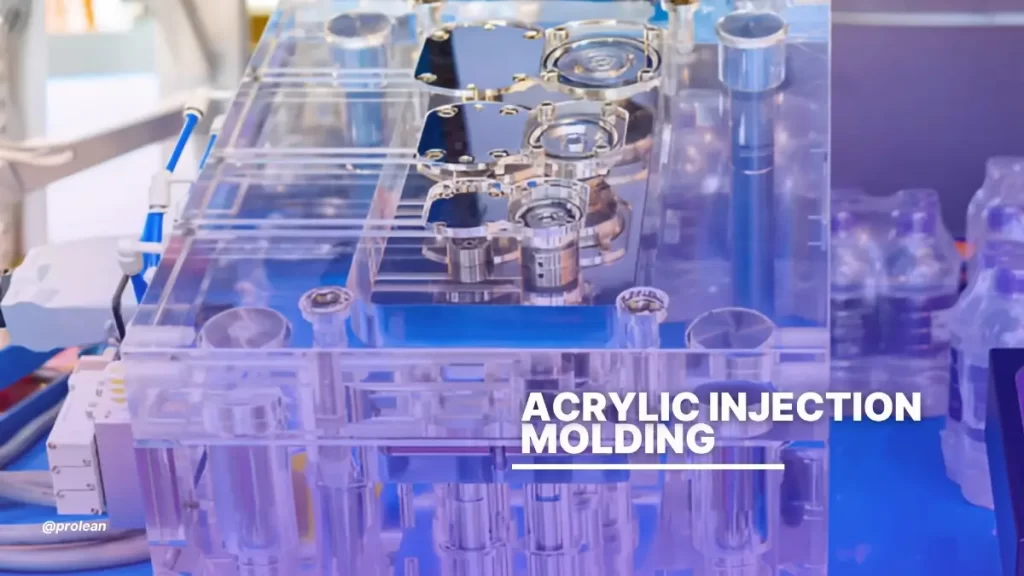
Acrylic Injection Molding
If you need strong, clear plastic that performs like glass, injection molding acrylic is the go-to option. Acrylic has high durability and design freedom. Its technical name is Poly(methyl methacrylate), or just PMMA. It is more brittle than polycarbonate, which actually handles high-pressure environments better. You get optical clarity without risking cracks and breaks. That makes it ideal for lenses, displays, and covers.
Besides clarity, you’re building strength. Acrylic injection molded products can withstand sunlight, heat, and regular impact. They can prevent cracking due to UV exposure.
You can use acrylic in all types of weather, day and night, all year round. It is tough enough to guard against getting wet, changing weather, and outside hazards. That’s why you’ll often find it in skylight panels and enclosures.
Acrylic isn’t always see-through if that’s not what you want. It’s simple to paint it to suit your products. It is usually available in translucent or opaque plastic forms.
You can maintain a sense of brand identity as long as your site’s components are strong enough. Compared to ABS injection molding or teflon injection molding, acrylic molding offers better clarity and design flexibility but is generally less strong and durable.
In this article, you’ll learn what is plastic injection molding’, primarily custom acrylic molding, key material traits, and processing techniques. We’ll also walk through design rules and molding tips.
Acrylic (PMMA) Material Characteristics

PMMA Molding
Table: Physical, Mechanical, and Molding Characteristics of Acrylic
| Category | Property | Typical Range | Unit |
| Physical | Material Density | 1.13 – 1.19 | g/cm³ |
| Typical Shrinkage Rate | 0.40 – 0.61 | % | |
| Hardness (Rockwell Scale) | 70 – 105 | R Scale | |
| Mechanical | Tensile Strength (Yield) | 6,400 – 10,700 | psi |
| Elongation at Break | 3 – 12 | % | |
| Flexural Modulus | 250,000 – 510,000 | psi | |
| Flexural Strength | 6,800 – 19,000 | psi | |
| Injection Molding | Recommended Drying Temp. | 75 – 90 | °C |
| Suggested Drying Time | 3.5 – 5 | hours | |
| Melt Processing Temp. | 225 – 270 | °C | |
| Mold Operating Temp. | 60 – 80 | °C |
Advantages of Acrylic Injection Molding
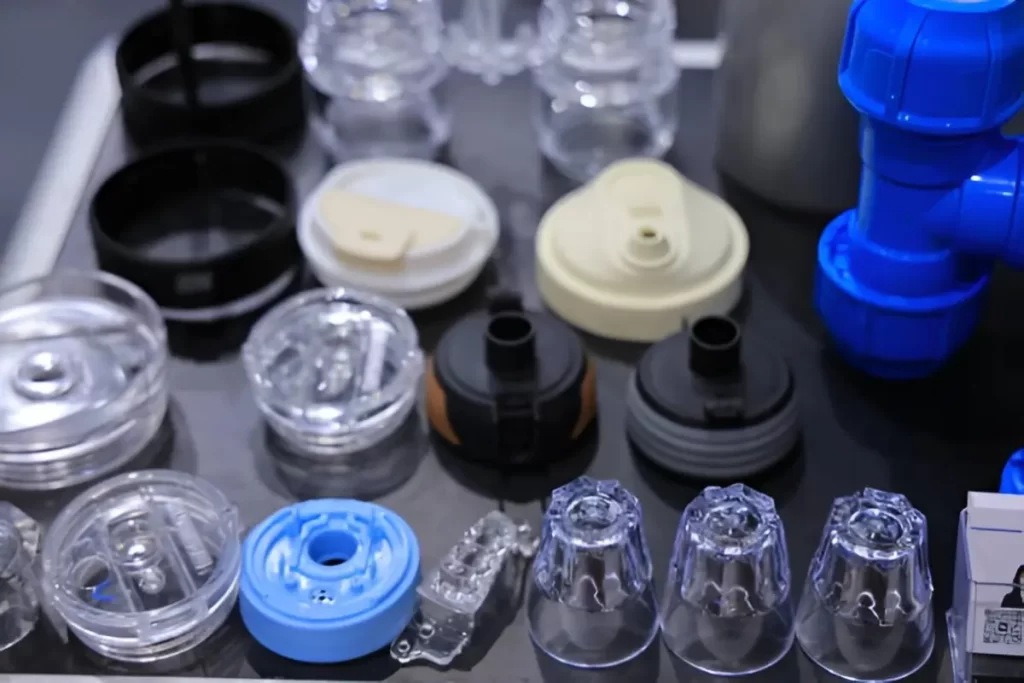
Acrylic Molded Products
You need several choices in parts when you design something strong and clear. Acrylic gives you high performance, efficiency, and reliability. Let’s look at why, among other injection molding materials, PMMA is such a unique t among other injection molding materialsype of material.
You Save Energy with Every Molded Cycle
Plastic molding commonly takes high energy. You can speed up that process by using acrylic pellets for injection molding. When it comes to acrylic injection molding temperature, it melts much more easily at lower temperatures than other plastics do.
You don’t need as much heat, and your machines take less time to run. Therefore, you can pay less to produce, and the parts last longer. If you’re committed to sustainability, it greatly benefits you.
Acrylic Stands Up to Outdoor Weather Easily
Acrylic resists sunlight and does not lose colour easily. It doesn’t weaken when it comes in contact with water. As a result, it’s great for putting up displays, windows, and signage outdoors. The results you see stay the same in any situation.
Acrylic Holds Its Shape
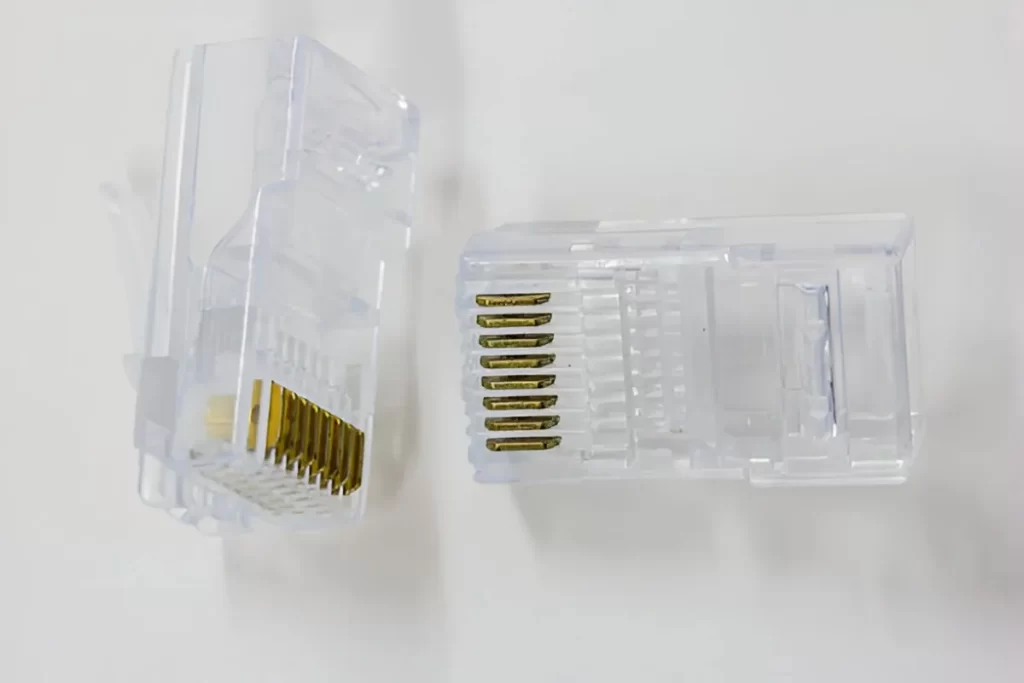
RJ45 Modular Connector Made of Acrylic
High-volume production requires you to make everything of consistent quality. Among many injection molding materials, PMMA maintains excellent shape stability for many parts produced in bulk. The size and shape of each component are tightly regulated.
No matter how worn down the tools or how the surroundings heat up, acrylic keeps its shape uniform. You don’t have to make changes every few times you wash. Being stable results in fewer errors and a more straightforward overall production process.
Acrylic Resists Many Harsh Industrial Chemicals

Clear Wire Holder Acrylic Part
Acrylic has moderate chemical resistance but may degrade when exposed to strong acids, organic solvents, or hydrocarbons like diesel over time. That’s one reason why it is used in automotive and factory settings. The paint is available for dashboards as well as machine covers. It stays together through hard handling.
You Get Optical Clarity That Rivals Glass
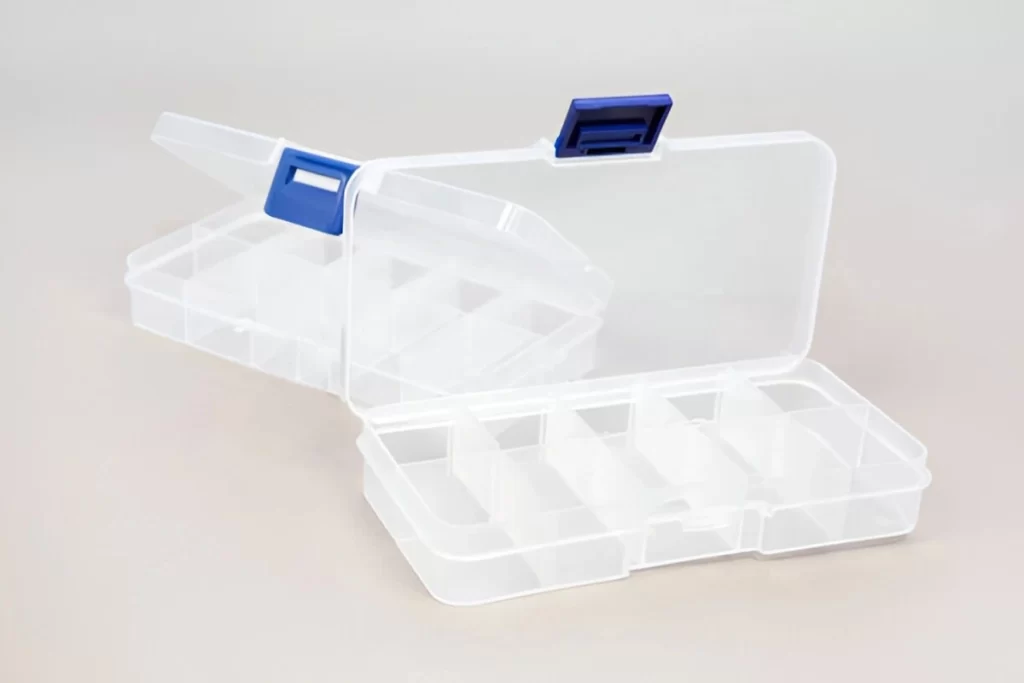
Acrylic Transparent Boxes
When it comes to injection molding material comparison, 93% of light can reach the inside using acrylic. You’ll discover that your finished parts have barely any haze.
If light or being able to see is a concern, PMMA should be your choice. You can use one in your light panels, lenses, or viewing stations. You’ll find that your brand gains trust and notice in just one composed package.
Acrylic Is Recyclable
Acrylic is recyclable. It can be reused, though, like most thermoplastics. But it may degrade after repeated processing. You can use it again instead of sending it to the landfill.
Even better, it’s stronger than the usual glass and less likely to shatter. Your choices always support people and the environment. As a result, acrylic is both environmentally friendly and helpful.
Try Prolean Now!
How to Design Acrylic Parts for Injection Molding
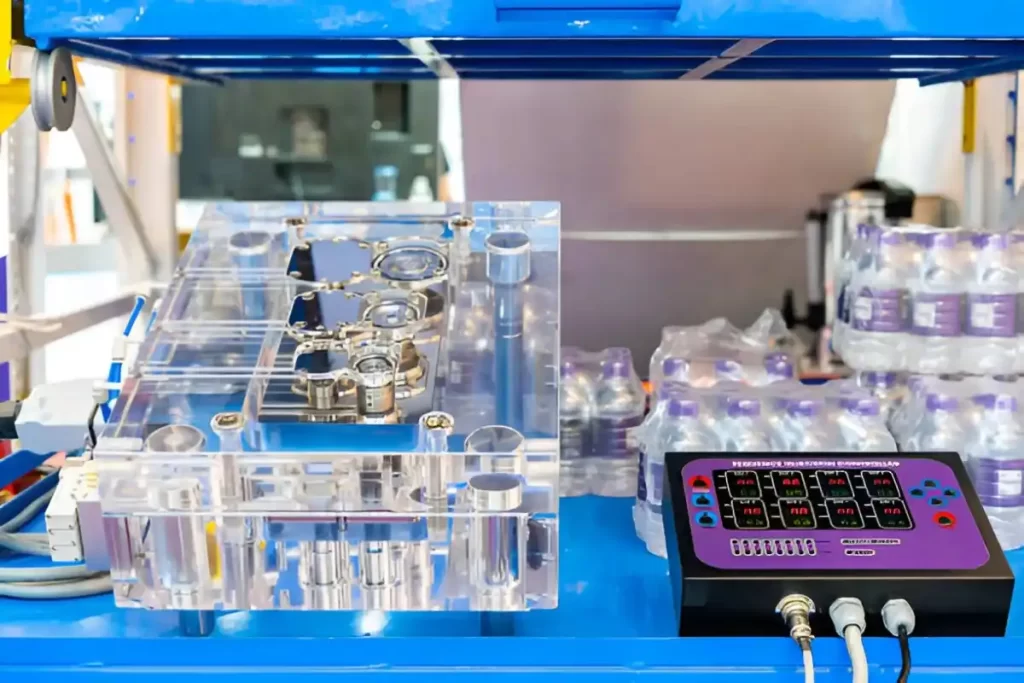
Acrylic plastic mold with sequence injection controller box
If you’re using acrylic plastic molding, you can make things efficient, clean, and free of common molding issues. Here’s how to make that happen.
Wall Thickness
The wall thickness should be the same everywhere on your part. These wall surfaces achieve the best results between 0.025” and 0.150”. Stress and the formation of defects can result from uneven walls. Therefore, avoid sudden changes in wall thickness across your design to prevent stress concentration and defects.
A stable thickness helps airflow and cooling to happen more easily. That way, your wood is less likely to warp and more durable.
Always Round Sharp Corners to Reduce Stress
You might think sharp corners look nice, but they’re a problem. Acrylic won’t stand the heat. It may crack or get too stressed.
Make the radii of your part soft and consistent to get better mold flow and aerodynamic durability. You should have at least 25% of your wall thickness as a minimum. It divides stress throughout your parts, not concentrating it in one area.
Use Draft Angles for Easy Mold Release
Parts need to be removed from the mold with no damage. A draft angle of between 1° and 2° is optimum.
If the surfaces of your part are transparent, you need to draft more. As a result, polished areas are protected as the plastic case is ejected.
The draft is something like insurance for your project. It keeps your molding from being scuffed, cracked, and damaged in other ways.
Tolerances
Acrylics have good tolerances, but don’t set them too high. Standard injection molding tolerances for parts less than 160 mm are between 0.1 mm and 0.325 mm.
Are you in need of sharper results? Delicate parts between 0 and 100 mm can be produced to a tolerance of 0.045 mm. Remember: if your tolerances become tighter, the cost will too. Pick the feature you need the most and ensure the style fits a purpose.
Try Prolean Now!
How to Process Acrylic in Injection Molding
The quality of your acrylic parts depends on how they are processed. Just as with other plastics, acrylic has rules you must follow. All the settings affect drying, moisture content, and mold cycle timing. Let’s look at the main elements that make up retail during the setup of the acrylic injection molding machine.
Let Your Acrylic Pellets Dry First
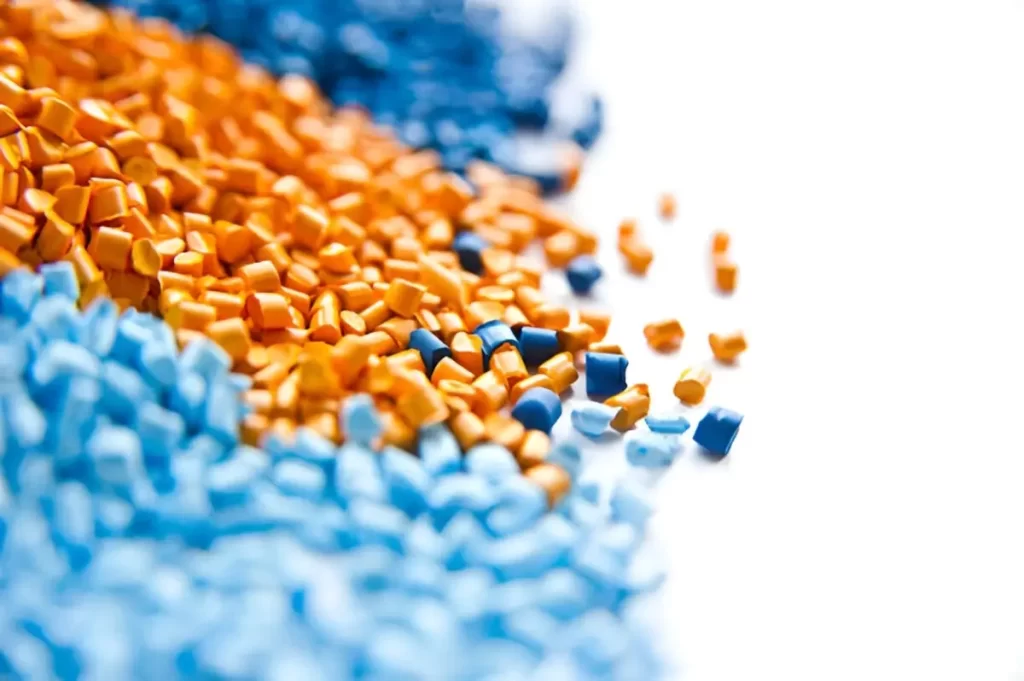
PMMA Granules
Although acrylic resists moisture in the final product, the pellets soak up water as they sit. If you skip drying, you’ll notice bubbles, haze, or cloudy patches on your print.
Clean, clear PMMA parts are possible after you dry them for 3.5 to 5 hours. Drying the material properly keeps its surface smooth and makes injection go easily.
Watch Out for Overheating
Acrylic is not safe for use in very hot temperatures. Brown marks and a smell of burning on your parts usually mean the material overheated during molding.
A reason for this might be because the barrel is too warm or the screw is spinning at a high speed. Keep the heat of your machines under close control throughout baking.
Use the Right Injection Pressure
The viscosity of molten PMMA is relatively high, requiring moderate to high pressure. If the parts are stuck, you can’t mold them properly.
When the pressure is low, you’ll see patches where the filler pulls away. You just want to fill the hole with material so no extra stress or flash occurs.
Thinner (not thicker) parts or small parts may only need less pressure. Everything depends on the part’s features and how difficult it is to machine.
Find the Best Injection Speed
How quickly a part is made can change the quality of that part. If you try to cook it too quickly, it may burn or become spoiled. As a result, the work has poor lines or obvious welds.
When a faucet runs slowly, the filling isn’t complete. Many of your shots will be short, or you’ll miss critical details.
You will likely become a better molder if you stick to a uniform and moderate speed. Its design ensures that the material is well distributed and cleans during cooling.
Shrinkage in Acrylic Molding
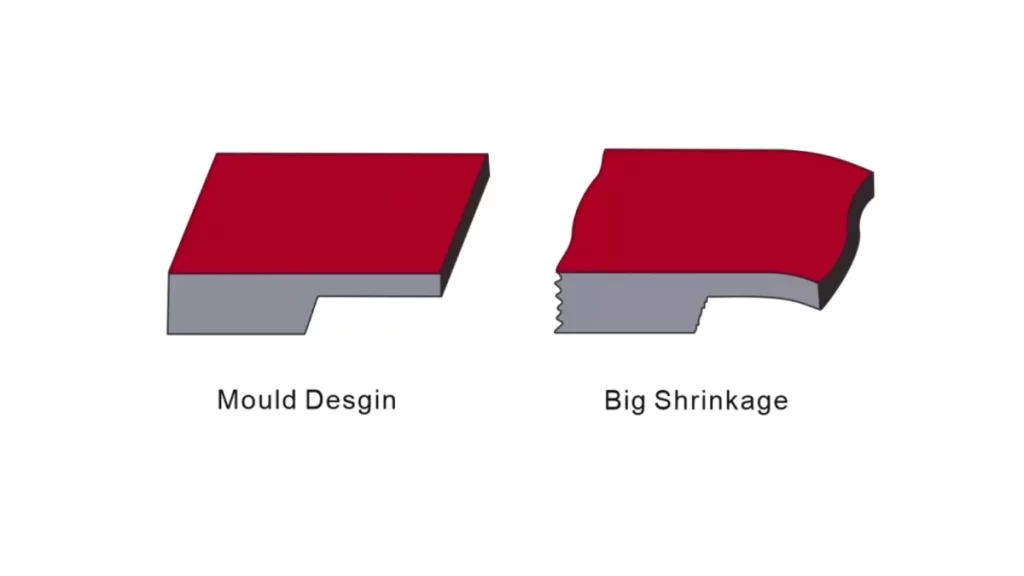
Mold Shrinkage
All plastics, including acrylic, tighten up when the temperature drops. The percentage is generally between 0.4% and 0.61%, which isn’t very high, yet should be noted.
Like most thermoplastics, PMMA contracts as it cools in the mold. As a result, shrinkage occurs. The majority of shrinkage occurs during cooling in the mold, with minor changes after ejection. The bulk of shrinkage occurs when the part is in the mold, but a bit more happens when the part is ejected.
All of these, pressure, temperature, and timing, should be considered in the design of the mold.
Why Choose Prolean Tech for Acrylic Injection Molding?
Acrylic is a popular plastic for many uses, but making quality parts requires skill and an appropriate process. If acrylic isn’t dried or processed correctly, it can cause problems and extra injection molding costs.
Prolean Tech has the experience and resources to help you every step of the way. From designing your part to making the first sample and complete production runs, we focus on getting your acrylic parts right.
Request a free quote from Prolean Tech today. We deliver fast, accurate, and reliable injection molding service that meets your needs.
FAQ’s
Q1: Can acrylic be used for injection molding?
Yes, you can use acrylic in injection molding processes. It forms clear, strong, and precise plastic parts easily. You’ll often see it used in lenses, covers, and displays.
Q2: What temperature is acrylic injection molding?
You should heat acrylic to around 200–250°C when molding. This range allows the material to flow well into molds. Keep the mold temperature between 60–90°C for best results.
Q3: What is the process of acrylic molding?
First, you heat acrylic pellets until they melt entirely. Then, you inject the liquid plastic into a steel mold. After cooling, you remove the solid, shaped acrylic part.

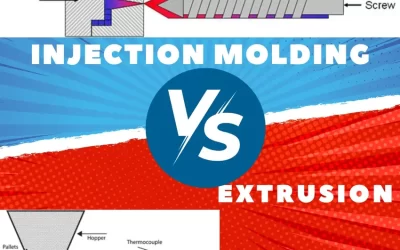
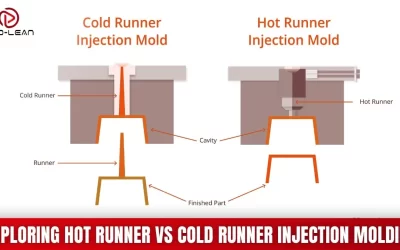
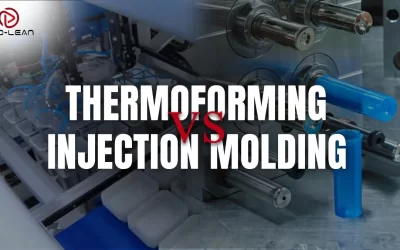
0 Comments